
Milling Equipment
Liquid nitrogen cryogenic vibration ball mill
Item Number : Kt-VBM100
Price varies based on specs and customizations
- Maximum injection size
- < 5 mm
- Sample particle size range
- 20um
- Grinding amount
- 1g-20g
- Vibration frequency
- 3000-3600r/min

Shipping:
Contact us to get shipping details Enjoy On-time Dispatch Guarantee.
Introduction
KT-VBM100 is a laboratory desktop high-performance vibrating ball mill and sieving dual-purpose small and lightweight instrument. The vibrating platform with a vibration frequency of 36,000 times/min provides energy. The grinding ball with a diameter of 60mm and a volume of 150ml is used for grinding. The mortar, through the violent collision of the ball and the mortar, is used for conventional grinding of hard, brittle, and materials. At the same time, liquid nitrogen can be poured into the mortar to improve the brittleness of soft, elastic, fibrous, and other difficult-to-handle samples. For crushing or grinding, KT-VBM100 can also be used as a sieving machine with 2-5 layers of analytical sieves with a diameter of 100-150mm and a precision of 20µm-63mm. The sieving weight is 3kg, and it can be used for dry sieving or wet sieving.
- Liquid nitrogen cryogenic vibration ball mill
- Processing principle: impact force
- Application sample characteristics: medium and low hardness | brittle | elastic | fibrous | soft
- Processing Type: Grinding | Sieving
- Main functions: continuous operation|intermittent operation|timing start|timer|one key repeat|power-off memory|temperature monitoring
- Additional features: Quick-lock platen with viewing window | Funnel for pouring liquid nitrogen | Grinding chamber exhaust
Applications
The Liquid Nitrogen Cryogenic Vibration Ball Mill is a specialized piece of equipment designed for grinding and pulverizing materials under ultra-low temperatures, utilizing liquid nitrogen as a cooling agent. This technology is particularly beneficial for materials that are heat-sensitive or prone to degradation at higher temperatures. The applications of this mill are diverse and cater to various industries where maintaining the integrity of materials is paramount.
- Material Science: Ideal for processing metallic powders and microstructured particles, especially those that require low-temperature conditions to prevent oxidation and maintain structural integrity.
- Pharmaceuticals: Useful for grinding temperature-sensitive pharmaceutical compounds and biological samples, ensuring minimal degradation and preserving their efficacy.
- Chemical Processing: Effective in pulverizing chemicals that are unstable at higher temperatures, facilitating safer and more efficient chemical reactions.
- Food and Beverage: Applicable in the production of fine powders from temperature-sensitive food ingredients, enhancing product quality and consistency.
- Plastics and Polymers: Essential for grinding plastics and polymers at low temperatures to prevent thermal degradation and maintain the physical properties of the materials.
- Research and Development: Widely used in laboratories for experimental purposes, particularly in studies involving the mechanical and thermal properties of materials.
- Environmental Remediation: Helps in the processing of materials used in environmental cleanup, ensuring that the materials remain effective and stable under controlled temperatures.
Features
The Liquid Nitrogen Cryogenic Vibration Ball Mill is a cutting-edge laboratory equipment designed to handle the grinding of brittle and heat-sensitive materials. This innovative tool leverages the power of cryogenic temperatures, typically below -150 °C, to ensure the preservation of sample integrity, particularly crucial for materials such as plastics, rubber, and biological samples. Here are the key features that make this mill stand out:
- Ultra-Low Temperature Grinding: Utilizes liquid nitrogen to cool the grinding chamber, ensuring minimal thermal degradation and optimal preservation of chemical and physical properties of the samples.
- Fine and Uniform Particle Production: Capable of producing particles with tolerances less than 5 μm, ensuring a high level of precision and uniformity in the ground material.
- Cryomilling Technology: Combines cryogenic temperatures with mechanical milling to achieve nanostructured microstructures, suppressing recovery and recrystallization for finer grain structures.
- Versatile Material Processing: Suitable for a wide range of materials including electronics, ceramics, chemicals, powdered metals, and pharmaceuticals, with options for different tank linings such as stainless steel, ceramic, and PTFE.
- Advanced Control Systems: Features a vibratory feeder and a helical screw conveyor with adjustable speeds, allowing precise control over the grinding process and the feed rate of materials.
- Efficient Nitrogen Circulation: Vaporized nitrogen is recycled back into the system, enhancing the efficiency of the cryogenic process and reducing waste.
These features not only enhance the grinding efficiency but also ensure that the integrity of sensitive materials is maintained, making the Liquid Nitrogen Cryogenic Vibration Ball Mill an indispensable tool for advanced materials research and processing.
Detail & Parts




Technical specifications
| Maximum injection size | < 5 mm |
| Sample particle size range | 20um |
| Grinding amount | 1g-20g |
| Vibration frequency | 3000-3600r/min |
| Vibration amplitude | 3mm |
| Vibration mode | two dimensional |
| Liquid nitrogen freezing method | Immersion |
| Grinding temperature | -196°C — 40°C |
| Ball mill material | Stainless Steel | Tungsten Carbide | Zirconia |
| Number of ball mill jars | 1 |
| Ball mill tank volume | 150ml |
| Grinding ball material | Stainless Steel | Tungsten Carbide | Zirconia |
| Grinding Ball Diameter | 40-60mm |
| Grinding method | Dry Grinding | Wet Grinding | Cryogenic Grinding |
| Screening method | dry sieving | wet sieving |
| Mesh Diameter | 100mm | 150mm |
| Dry screening range | 20um - 63mm |
| Wet screening range | 20um - 10mm |
| Maximum sieving weight | 3kg |
| Screen layers | 2-5 floors |
| Drive mod | mechanical drive |
| Electrical description | 100-120V/200-240V AC, 50-60Hz, 150W |
| Power port | National Standard | European Standard | American Standard | British Standard, etc. |
| Net weight | 35kg |
| Dimensions (width, depth and height) | 400*300*200mm |
| Protection class | IP65 |
| Standard | CE |
| Additional items | Wet Screening Locking Platen and Screen Bottom with Nozzles, PC Shield for Cryogenic Grinding |
Advantages
The Liquid Nitrogen Cryogenic Vibration Ball Mill offers a range of advantages that enhance the grinding process, particularly for heat-sensitive and brittle materials. Here are the key benefits:
- Enhanced Material Integrity: By using liquid nitrogen to cool the grinding chamber, the mill preserves the chemical and physical properties of materials, especially crucial for plastics, rubber, and biological samples. This ensures minimal thermal degradation and maintains sample integrity.
- Optimized Particle Size and Distribution: The cryogenic environment allows for the production of fine and uniform particles. This is particularly beneficial for applications requiring precise particle size distribution, enhancing the overall quality of the ground product.
- Increased Productivity and Throughput: The mill's design and operation facilitate higher production rates and increased throughput. This is achieved through optimized particle size and efficient grinding mechanisms, leading to increased productivity.
- Reduced Wear on Grinding Equipment: The use of liquid nitrogen helps in reducing the temperature of the grinding process, which in turn decreases wear on the grinding equipment. This extends the lifespan of the machinery and reduces maintenance costs.
- Elimination of Caking and Clogging: Cryogenic grinding prevents caking and clogging within the mill, which are common issues in traditional grinding methods. This ensures a smoother operation and continuous production flow.
- Energy Efficiency: The cryogenic mill operates with lower energy consumption compared to conventional mills. This not only reduces operational costs but also makes the process more environmentally friendly.
- Improved Pouring Properties: The finely ground materials produced by the cryogenic mill improve the pouring properties of the product, which is beneficial in various industrial applications.
- Reduction in Microbial Load: The ultra-low temperatures used in cryogenic grinding also help in reducing the microbial load in the ground materials, enhancing the safety and quality of the final product.
- Separation of Composite Materials: The mill aids in the separation of composite materials within the grinding chamber, which is crucial for materials with multiple components.
- Lower Grinding Costs: Overall, the combination of higher efficiency, reduced wear, and lower energy consumption leads to lower grinding costs, making the Liquid Nitrogen Cryogenic Vibration Ball Mill a cost-effective solution for grinding applications.
Warnings
Operator safety is the top important issue! Please operate the equipment with cautions. Working with inflammable& explosive or toxic gases is very dangerous, operators must take all necessary precautions before starting the equipment. Working with positive pressure inside the reactors or chambers is dangerous, operator must fellow the safety procedures strictly. Extra caution must also be taken when operating with air-reactive materials, especially under vacuum. A leak can draw air into the apparatus and cause a violent reaction to occur.
Designed for You
KinTek provide deep custom made service and equipment to worldwide customers, our specialized teamwork and rich experienced engineers are capable to undertake the custom tailoring hardware and software equipment requirements, and help our customer to build up the exclusive and personalized equipment and solution!
Would you please drop your ideas to us, our engineers are ready for you now!
FAQ
What is a cold trap chiller in lab?
What is cryomilling and how does it differ from traditional grinding methods?
What types of materials are best suited for processing in a Cryogenic Mill?
How does the Cryogenic Grinding Mill system work?
What are the applications of pellet presses?
What types of materials can be processed in a rotary furnace?
What is the purpose of a cold trap chiller?
How does a pellet press work?
What are the rotary furnace types?
Why is a cold trap placed before the vacuum pump?
What are the benefits of using a pellet press?
What are the advantages of rotor furnace?
What factors should be considered when selecting a pellet press?
What is the efficiency of a rotary furnace?
Can a rotary furnace be used for continuous production?
How can the performance of a rotary furnace be optimized?
4.8
out of
5
Excellent mill for grinding various materials. The cryogenic feature is a game-changer for temperature-sensitive samples.
4.9
out of
5
This mill has exceeded our expectations. The speed and efficiency of the grinding process are remarkable.
4.7
out of
5
The mill is very user-friendly and produces consistent results. We've seen a significant improvement in our sample preparation time.
4.6
out of
5
The build quality of this mill is top-notch. It's evident that KINTEK SOLUTION puts a lot of care into their products.
4.9
out of
5
The technical support from KINTEK SOLUTION is outstanding. They were very responsive and helpful when we had questions about the mill.
4.8
out of
5
The mill is very versatile and can handle a wide range of materials. We've been able to use it for both dry and wet grinding applications.
4.7
out of
5
The mill is very quiet, which is a big plus for our lab. It doesn't disrupt our other experiments.
4.9
out of
5
The mill is very easy to clean and maintain. It saves us a lot of time and effort.
4.8
out of
5
Overall, we are very satisfied with the Liquid nitrogen cryogenic vibration ball mill. It's a valuable addition to our lab.
REQUEST A QUOTE
Our professional team will reply to you within one business day. Please feel free to contact us!
Related Products

Vibration Mill for Efficient Sample Preparation, Suitable for Crushing and Grinding a Variety of Materials with Analytical Precision. Supports Dry / Wet / Cryogenic Grinding and Vacuum/Inert Gas Protection.

High Energy Vibratory Ball Mill
The high-energy vibrating ball mill is a high-energy oscillating and impacting multifunctional laboratory ball mill. The table-top type is easy to operate, small in size, comfortable and safe.

High Energy Vibratory Ball Mill (Single Tank Type)
High-energy vibration ball mill is a small desktop laboratory grinding instrument.It can be ball-milled or mixed with different particle sizes and materials by dry and wet methods.

High energy vibratory ball mill (double tank type)
High-energy vibration ball mill is a small desktop laboratory grinding instrument. It uses 1700r/min high-frequency three-dimensional vibration to make the sample achieve the result of grinding or mixing.

Hybrid High Energy Vibratory Ball Mill
KT-BM400 is used for rapid grinding or mixing of dry, wet and frozen small amount of samples in the laboratory. It can be configured with two 50ml ball mill jars
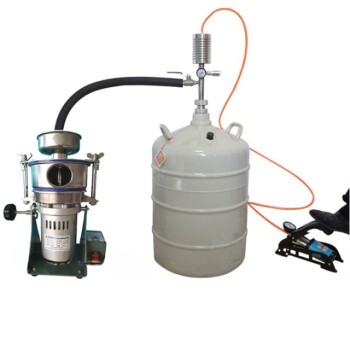
Small Cryogenic Grinding use Liquid Nitrogen for chemicals and coatings in Laboratory
Our KINTEK pulverizer is perfect for small runs and R&D trials. With a versatile cryogenic system, it can handle a variety of materials, including plastics, rubber, pharmaceuticals, and food grades. Plus, our specialized hydraulic laboratory crushers ensure accurate results through multiple passes, making it suitable for XRF analysis. Get finely-powdered samples with ease!

The vertical cabinet structure combined with ergonomic design enables users to obtain the best comfortable experience in standing operation. The maximum processing capacity is 2000ml, and the speed is 1200 revolutions per minute.

Metal Alloy Grinding Jar With Balls
Grind and mill with ease using metal alloy grinding jars with balls. Choose from 304/316L stainless steel or tungsten carbide and optional liner materials. Compatible with various mills and features optional functions.
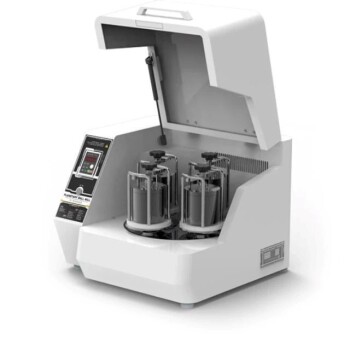
High energy Planetary Ball Mill
The high-energy planetary ball mill KT-BMP2000 can not only perform fast and effective grinding, but also has good crushing ability. It can crush and grind hard samples with large particle size, which can meet more processing needs of users.
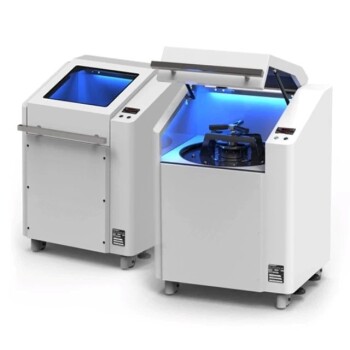
The vibrating disc mill is suitable for non-destructive crushing and fine grinding of samples with large particle sizes, and can quickly prepare samples with analytical fineness and purity.
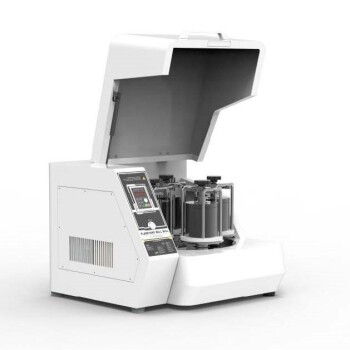
High energy planetary ball mill
Experience fast and effective sample processing with the F-P2000 high-energy planetary ball mill. This versatile equipment offers precise control and excellent grinding capabilities. Perfect for laboratories, it features multiple grinding bowls for simultaneous testing and high output. Achieve optimal results with its ergonomic design, compact structure, and advanced features. Ideal for a wide range of materials, it ensures consistent particle size reduction and low maintenance.

High energy planetary ball mill (Horizontal tank type)
KT-P4000H uses the unique Y-axis planetary motion trajectory, and utilizes the collision, friction and gravity between the sample and the grinding ball to have a certain anti-sinking ability, which can obtain better grinding or mixing effects and further improve the sample output.
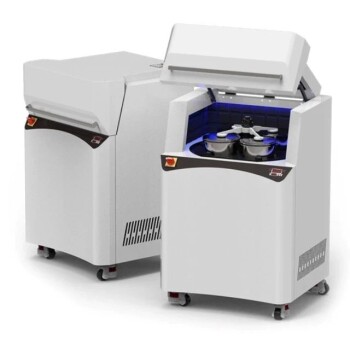
Disc Cup Vibrating Mill Multi-Platform
The multi-platform vibrating disc mill is suitable for non-destructive crushing and fine grinding of samples with large particle sizes. It is suitable for crushing and grinding applications of medium-hard, high-hard, brittle, fibrous, and elastic materials.

KT-MT10 is a miniature ball mill with a compact structure design. The width and depth are only 15X21 cm, and the total weight is only 8 kg. It can be used with a minimum 0.2ml centrifuge tube or a maximum 15ml ball mill jar.

High energy planetary ball mill (Horizontal tank type)
The KT-P2000H uses a unique Y-axis planetary trajectory, and utilizes the collision, friction and gravity between the sample and the grinding ball.

KT-JM3000 is a mixing and grinding instrument for placing a ball milling tank with a volume of 3000ml or less. It adopts frequency conversion control to realize timing, constant speed, direction change, overload protection and other functions.

High Throughput Tissue Grinder
KT-MT is a high-quality, small, and versatile tissue grinder used for crushing, grinding, mixing, and cell wall breaking in various fields, including food, medical, and environmental protection. It is equipped with 24 or 48 2ml adapters and ball grinding tanks and is widely employed for DNA, RNA, and protein extraction.
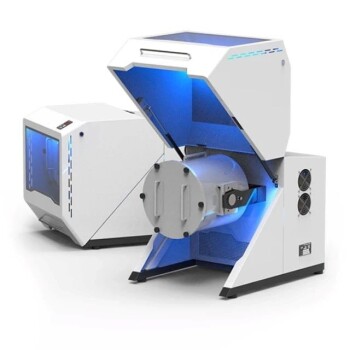
The roller mill is a horizontal grinder with 1-20L batch grinding capacity. It uses different tanks, rotating to grind samples below 20um. Features include stainless steel construction, soundproof cover, LED lighting, and PC window.

High-energy omnidirectional planetary ball mill
The KT-P4000E is a new product derived from the vertical high-energy planetary ball mill with a 360° swivel function. Experience faster, uniform, and smaller sample output results with 4 ≤1000ml ball mill jars.
Related Articles

Disc / Cup Vibratory Mill: A Comprehensive Guide for Laboratory Experts
Discover the world of Disc / Cup Vibratory Mills! This comprehensive guide provides an in-depth understanding of their types, working principles, advantages, and applications in various industries, including pharmaceuticals, chemicals, and food processing.

Disc / Cup Vibratory Mill: A Comprehensive Guide to Its Functions and Applications
Discover the world of Disc / Cup Vibratory Mills with our in-depth guide. Learn about their working principles, applications, advantages, and key features. Explore the various types of vibratory mills and their suitability for different industries.

Choosing the Best Material for Ball Mill: Essential Factors and Recommendations
Discover the best material for ball mill applications and grinding success. Learn about the features and benefits of stainless steel, ceramic, agate, and tungsten carbide media. Find out how to ensure grinding success and the ideal grinding jars and media for planetary ball milling. Explore the applications of ball mills and the advantages of high-energy ball mills for ultra-fine particles.

Key Features of the Micro Tissue Grinder: Usage, Advantages, and Applications
Discover the key features of the Micro Tissue Grinder, including usage instructions, advantages, and application fields. Learn the principles and structure of the Micro Tissue Grinder, and explore its benefits in sample preparation and industrial settings.

Sieving technology for particle size analysis and its applications
Introducing screening technology, explaining the working principle of vibrating screens and the advantages of using them for particle size analysis in screening technology. Learn about the types of vibrating screens and how to choose one.

The Ultimate Guide to the Application and Benefits of Vibratory Sieve Shaker in Laboratory Testing
Discover the extensive application of vibratory sieve shaker in laboratory testing for industries such as food, medicine, chemical, and more. Learn about the benefits of using a sieve shaker.

Advantages of Planetary Ball Mill in Laboratory Applications
Discover the advantages of using planetary ball mills in laboratory settings. Learn about its ability to produce fine powder, suitability for toxic materials, wide range of applications, continuous operation, and usage for milling abrasive materials. Explore how planetary ball mills differ from traditional milling machines and their function in creating ultrafine and nano-sized materials.

Revolutionizing Lab Efficiency: The Ultimate Guide to Laboratory Sieving Machines
Discover the common sieving methods used in laboratory analysis. Learn about single sieve and sieve set sieving, dry and wet sieving, and other techniques for effective particle separation. Find out how sieving has evolved over time and its importance in quality assurance.

Maximizing Grinding Efficiency: The Power of Planetary Ball Mills
Discover why planetary ball mills offer higher grinding efficiency than ordinary ball mills. Learn about the technology behind their high-performance all-round capabilities. Find out the key factors influencing the productivity and specific energy consumption of ball mills.

What is a Laboratory Crusher Used For?
Discover the uses and working mechanism of laboratory crushers. Explore various types of crushing equipment and their applications. Learn how laboratory crushers play a crucial role in scientific analysis and environmental studies.

Laboratory Crushers: A Comprehensive Guide to Their Uses and Functionality
Laboratory crushers play a crucial role in scientific research and analysis. These crushers, commonly known as jaw crushers, are indispensable in obtaining accurate and consistent results for sample preparation.

Applications and Importance of Hydraulic Press in Laboratories
A hydraulic press is a machine that uses the pressure generated in a confined fluid to configure metals, plastics, rubber, and other materials. Its operation is governed by Pascal’s principle, which states that pressure applied to a confined fluid is transmitted unaltered throughout the fluid.